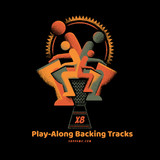How to Repair and Tune Your Mbira
Properly maintaining and repairing your mbira keeps it in good condition. But it can be hard to find good info on how to maintain and repair an mbira. In fact, one question that mbira, kalimba, and matepe percussionist Joel Laviolette gets a lot and hasn’t seen any good Youtube videos on is how to fix loose mbira keys. In our latest video, Joel explains how to tune and fix loose keys and also shares some general maintenance tips so that you can keep your new mbira in top shape.
How to Fix a Loose Mbira Key
There are two ways you can tell when a key is loose: the key will sound different from the others or the buzz will be of lesser quality than the standard buzzing sound when you hit that loose key. To fix the loose key, whether on a bolt-constructed or wire-constructed mbira, all you need is a hammer. Look for the point where the loose key crosses underneath the bar that runs across the keys. Then, pull the key back so that the point where the key meets the bar is just over the top edge of the body. If you can’t get that point all the way to the edge, that’s ok. Just make sure you get an inch or so of the key over the edge.
When you have a loose key, that means there needs to be more tension underneath the crossbar. To increase the tension, you have to bend the key a little bit so that it’s pushing harder against the crossbar. Use the hammer to give the key a little tap, then lightly pull the end of the key up with your hand to maintain the key’s curve. Tap the key back in using the hammer. To prevent the hammer from hitting, and potentially loosening, other keys, place a coin or a house key between the end of the mbira key and the hammer.
How to Tune an Mbira Key
To flatten, or tune, a key that’s sharp, simply tap it down from the top, just like when you tap a loose key back into place after increasing the tension. Whether you’re fixing or tuning a key, the most important thing to remember is not to pound too hard when tapping the key back in, as you might loosen some keys around it. That’s actually the biggest difference between an mbira with bolt construction and one with wire construction. For the bolt-on mbiras, you can get the crossbar a lot tighter, so if you do accidentally tap a key too hard, it’s less likely you’ll loosen the keys around it. On a wire-constructed mbira, you want to be even more careful when tapping a key to prevent loosening the keys around it.
We don’t recommend tuning or tightening loose keys with pliers, as doing so increases the chance of loosening other keys.
Mbira Maintenance Tips
Over time, mbira keys can rust, which can be confused with tarnish. A lot of mbira builders in Zimbabwe will rub fat on the keys of a finished mbira, then hang it over fire so that the smoke creates tarnish, which protects the keys and locks them into place. So that tarnish you might see on your mbira is a good thing. Rust, which will have more of an orange color, is what you want to fix. And all you have to do to get rid of rust is to just rub it off with a towel or even your finger. The rust will then become part of the tarnish.
Another important tip to remember? Never put your mbira in a bag, as it will push up against the edges and cause the keys to fold in. It won’t harm your mbira, but you’ll have to put those keys back where they need to be. When you put your mbira in a bag, it’s also a lot easier to forget it’s there, which can result in all kinds of other damage.
Recent Posts
-
X8 Drums Play-Along Backing Tracks
The new X8 Play-Along Series is being produced for our musician friends wanting a fresh way to work …9th Feb 2025 -
What is the Best Size Djembe for Beginners?
If you're new to the world of percussion and interested in learning the djembe, you're in for a t …16th Jul 2024 -
The Benefits of Becoming a Drumming Teacher: Transforming Passion into Profession
Why become a drumming teacher? Becoming a drumming teacher is an excellent way to share your pas …22nd May 2024



